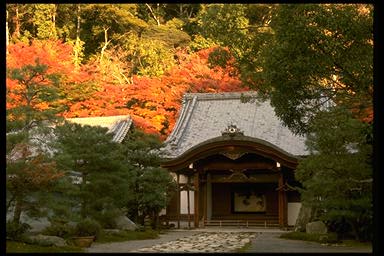

By the late Heian period, concerns with personal salvation had come to dominate most Buddhist schools. Thoughtful Buddhists extended these concerns to others, to even the most insignificant of creatures, and to the future of the universe. This stemmed in part from the way that the Japanese connected social realities--in particular, the moral decline of religious institutions--with Buddhist thought about the historical process. The scriptures provided an explanation for the times. History was seen as a process of cyclical decay and renewal: Buddhism itself had begun to decline some five hundred years after the death of Shakyamuni, the original "historical" buddha. Conditions would reach a low point, the scriptures taught, then gradually improve until another buddha's coming. Though the time scheme in the scriptures was really quite vague, it became fashionable in the late Heian period to regard contemporary times as the low point in the cycle.
Earlier schools of thought had held that salvation depended upon the believer's own goodness or rigorous religious practice. But by the late Heian period, many thinkers deemed such things impossible for people unfortunate enough to be born in the "degenerate" age predicted by the scriptures. People were urged to seek simple, easy ways to salvation. The method most often recommended was to rely on the saving grace of Amida, obtained simply by chanting his name. Other thinkers held that salvation could result from insignificant good deeds, such as the donation of small amounts for the repair of temples or the making of sacred images. This meant that the Buddhist believer need not be wise enough to understand the scriptures, or rich enough to donate large sums to monasteries. Even the poor became targets for conversion.
But salvation was more than just an individual concern. The conditions that impelled people to hope for paradise also seemed to threaten human society itself. This made it imperative to preserve the Buddhist law on which humanity's salvation was thought to depend. If Buddhism's institutions and symbols--its images, scriptures and monasteries--could weather the difficulties of the times, then perhaps they could last until the upturn of the cycle, the millennia of gradual improvement that would culminate in the coming of the new Buddha. By working to preserve these things, people could participate in the future golden age.
Go back to previous section.
 Go on
to next section.
Go on
to next section.
Return to menu page.